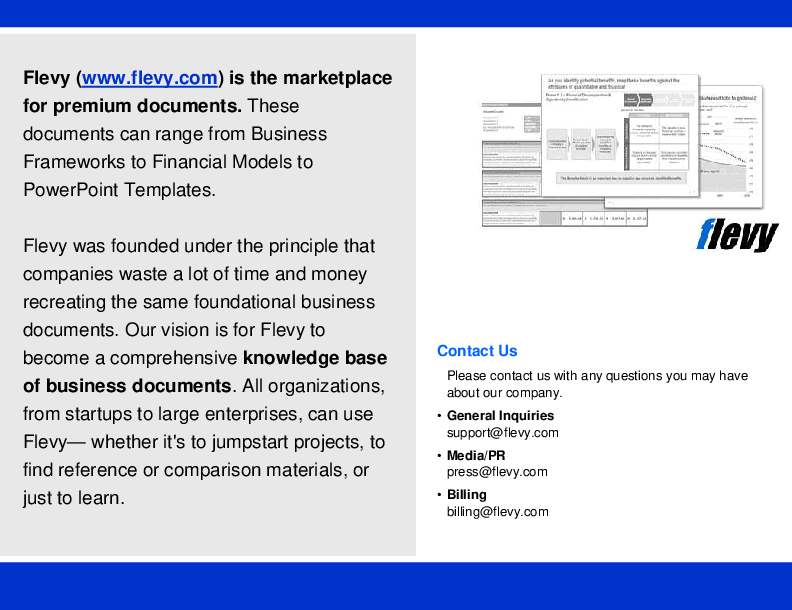Enterprise Architecture for Digital Strategy (PowerPoint PPT Slide Deck)
PowerPoint (PPT) 14 Slides FlevyPro Document
Sorry, this document is currently only available to FlevyPro subscribers.
You can join FlevyPro for only $39/month.
Or, you can subscribe to the Digital Transformation Stream, our curated collection of Digital Transformation frameworks.
DIGITAL TRANSFORMATION PPT DESCRIPTION
Enterprise Architecture (EA) is a well-defined framework for conducting enterprise analysis, design, planning, and implementation for the successful development and execution of strategy. Practitioners of EA, known as Enterprise Architects, are often called upon to draw conclusions from the information collected to address the goals of enterprise architecture: Effectiveness, Efficiency, Agility, and Durability.
As with any business strategy, the EA discipline is there to support the business transformation to success with a design strategy. The term "Enterprise" in Enterprise Architecture refers to the greater scope of the organization, which includes the customers, contacts, stakeholders in the wider market environment, which is addressed by the Digital Strategy. Enterprise Architecture should involve a holistic approach at all times.
EA helps organizations drive innovations and new business capabilities across their entire value chain and to better understand the digital environment where they will be operating.
This PPT provides a comprehensive breakdown of the seven primary architecture domains essential for Enterprise Architecture, including Strategy, Performance Architecture, and Business Transformation. It also delves into the additional three domains crucial for digital strategy: Market Architecture, Brand Architecture, and Customer Architecture. Each domain is meticulously detailed to ensure a robust understanding of its role in driving digital transformation.
The presentation includes visual representations and core activities for each domain, offering actionable insights and practical frameworks. It emphasizes the importance of aligning internal models with customer connection models and provides clarity on governance and decision-making processes. This resource is indispensable for executives aiming to enhance their digital strategy through a structured and holistic approach to enterprise architecture.
Got a question about the product? Email us at flevypro@flevy.com.
Source: Best Practices in Digital Transformation, Digital Strategy, Enterprise Architecture PowerPoint Slides: Enterprise Architecture for Digital Strategy PowerPoint (PPT) Presentation Slide Deck, PPT Lab
Sorry, this document is currently only available to FlevyPro subscribers.
You can join FlevyPro for only $39/month.
Or, you can subscribe to the Digital Transformation Stream, our curated collection of Digital Transformation frameworks.
Did you need more documents?
Consider a FlevyPro subscription from $39/month. View plans here.







